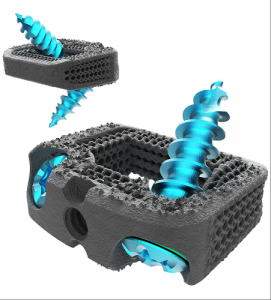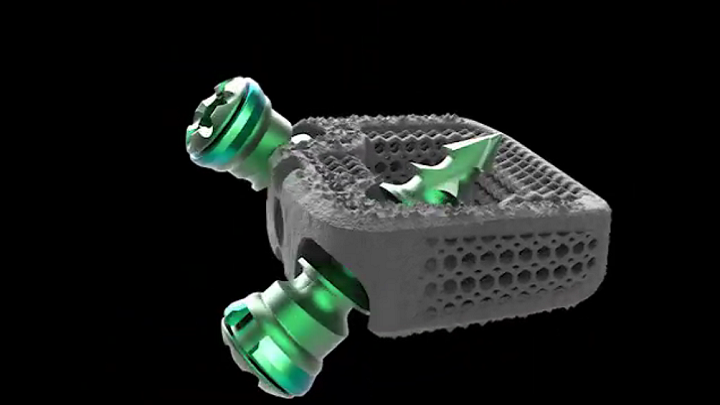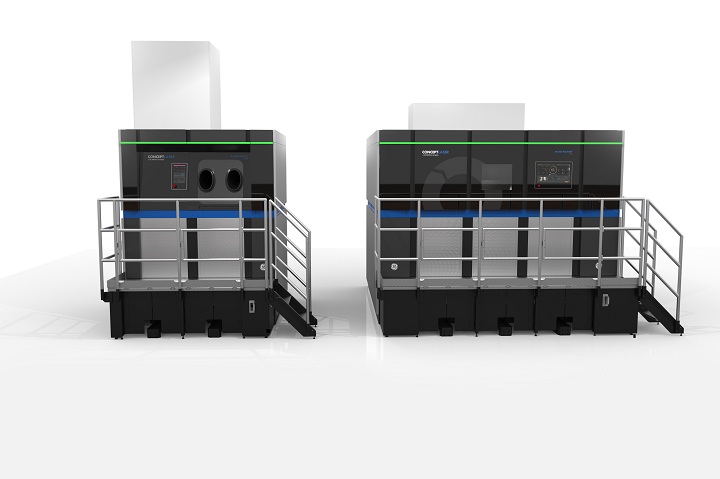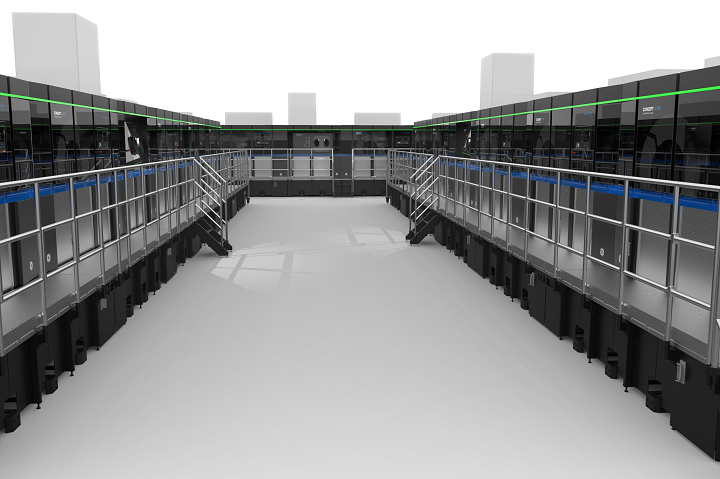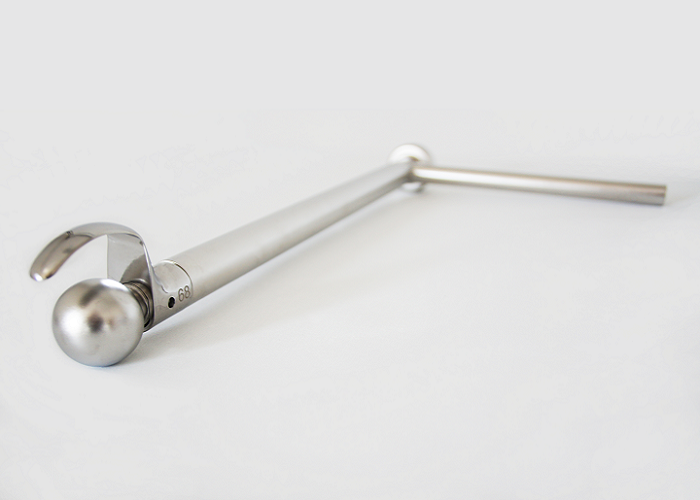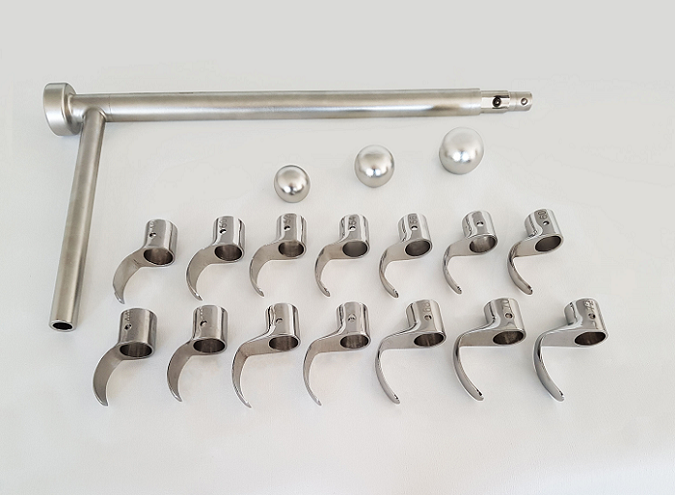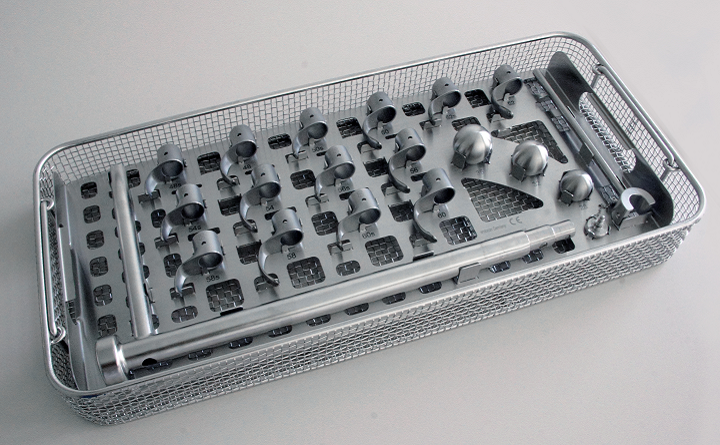Nexxt Spine Receives FDA 510(k) Clearance for 3D Printed Stand Alone Cervical Implants
 Medical device company Nexxt Spine, founded in Indiana ten years ago, manufactures its own product line of spinal implants and instrumentation. This month, the company announced that its NEXXT MATRIXX Stand Alone Cervical System has officially received 510(k) clearance from the FDA.
Medical device company Nexxt Spine, founded in Indiana ten years ago, manufactures its own product line of spinal implants and instrumentation. This month, the company announced that its NEXXT MATRIXX Stand Alone Cervical System has officially received 510(k) clearance from the FDA.
Nexxt Spine first invested in metal 3D printing in 2017 – specifically the Concept Laser technology from GE Additive. The company increased its investment in GE Additive’s metal AM technology this spring with the installation of its fourth and fifth Mlab 100R systems, and also uses Concept Laser’s metal 3D printing to create this latest anticipated line extension of its NEXXT MATRIXX family.
The Stand Alone Cervical System includes the surgeon-friendly precision, and excellent design qualities, that are part and parcel of the company’s NEXXT MATRIXX brand of 3D printed porous titanium interbodies.
This particular system is fabricated on GE Additive’s Mlab 3D printer. It is available in multiple screws and footprints, and ensures one-step locking, in addition to several options for drills and inserters as well.
“The NEXXT MATRIXX® Stand Alone Cervical System is a stand-alone anterior cervical interbody fusion system intended for use as an adjunct to fusion at one or two contiguous levels (C2-T1) in skeletally mature patients for the treatment of degenerative disc disease (defined as discogenic neck pain with degeneration of the disc confirmed by history and radiographic studies). These patients should have received at least six weeks of non-operative treatment prior to treatment with the device,” a brochure about the system states. “The NEXXT MATRIXX® Stand Alone Cervical System is to be used with autograft bone graft and/or allogeneic bone graft composed of cancellous and/or corticocancellous bone and implanted via an open, anterior approach. The NEXXT MATRIXX® Stand Alone Cervical System is intended to be used with the bone screw fixation provided and requires no additional fixation.”
Nexxt Spine is known for combining quality manufacturing with design expertise to create high quality spinal products with unique features. Now, the company can achieve bone biology relevance, cellular scaffolding, and tailored surface topography in one, which is why it is so pleased to introduced its Stand Alone Cervical System to the market.
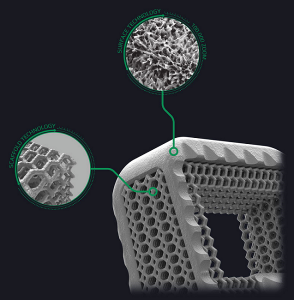 The system marries the benefits and functionality of a cervical interbody and anterior cervical plate into one product. Designed to reduce the amount of soft tissue damage and irritation, these 3D printed cervical implants come in multiple footprints and heights in order to better fit each individual patient.
The system marries the benefits and functionality of a cervical interbody and anterior cervical plate into one product. Designed to reduce the amount of soft tissue damage and irritation, these 3D printed cervical implants come in multiple footprints and heights in order to better fit each individual patient.
“This enhancement of the NEXXT MATRIXX portfolio was the next natural progression for Nexxt Spine. With patient care always top of mind, we strive to develop end products that surgeons prefer and hardware patients can count on. Our Stand Alone Cervical is no exception and will showcase the propensity of NEXXT MATRIXX technology to facilitate the body’s natural power of cellular healing for fortified fusion,” said Nexxt Spine President Andy Elsbury.
Current distributor partners of Nexxt Spine can now pre-order the NEXXT MATRIXX Stand Alone Cervical System.
What do you think? Discuss this story and other 3D printing topics at 3DPrintBoard.com or share your thoughts in the Facebook comments below.
[Images: Nexxt Spine]
The post Nexxt Spine Receives FDA 510(k) Clearance for 3D Printed Stand Alone Cervical Implants appeared first on 3DPrint.com | The Voice of 3D Printing / Additive Manufacturing.
Xometry receives ISO 9001:2015 and AS9100D Aerospace Quality Certification
Tangible Solutions expands 3D printing facility to meet medical implant demand
2019 3D Printing Industry Awards update Enterprise 3D Printer of the Year Metal and Polymers
GE Additive announces M Line Factory release date and forges software partnerships
GE Additive Announced that Concept Laser’s M LINE Factory 3D Printing System Will Be Delivered in Q2 2019
A little over two years ago, GE acquired a 75% stake in metal 3D printing leader Concept Laser. Ever since then, GE Additive has been working to review and redesign the system, software, and design architecture of Concept Laser’s M LINE FACTORY 3D printer so that it’s in line with established GE processes. The modular system has also been undergoing beta testing with some selected customers. But today at formnext in Frankfurt, GE Additive announced that its first Concept Laser M LINE FACTORY systems will finally be delivered to customers in Q2 of 2019.
The M LINE Factory provides excellent reliability and automation, which in turn drives scalable, economical series production on an industrial scale – something that most current standalone machine solutions cannot achieve. As the technology continues its transition from prototyping to production, the demand for quality 3D printers, along with operators to run them and floor space to house them, is rising.
“The positive impact the M LINE FACTORY can have on our customers’ operations and their bottom line is huge,” said Jason Oliver, the President and CEO of GE Additive. “It’s important we provide technologically advanced systems that are reliable and add value to our customers. M LINE FACTORY delivers on those commitments.”
The system is an important part of GE Additive’s focus on providing reliable, repeatable 3D printers that are ready for series production. The M LINE FACTORY has a maximum build envelope of 500 x 500 x up to 400 mm³ (x,y,z), and is optionally equipped with one to four laser sources, each one delivering 1,000 W of power.
During the last two years of lifetime and rig testing, the company identified several areas for improvement that have since been incorporated, such as the onboard software system, which offers real-time, in-situ process monitoring, modularized architecture, and superior exposure strategies. The 3D printer’s automation and in-machine architecture have been improved, and its ease of service, scalable modular system design, serviceability, process control, and thermal stability have all been enhanced.
The set-up and dismantling processes, along with part production, actually occur in two independent machine units, which can either be combined or operated separately from one another, according to the customer’s preference. This makes it possible to run production processes in parallel, instead of sequentially, which increases the output quantity and availability of the process chain and lowers downtime.
The M LINE Factory LPS, which stands for Laser Processing System, increases the laser ‘on’ time by separating the pre/post processing unit from the individual work process, while at the same time maintaining an integrated machine design. Instead of forming a single continuous unit, the LPS is made up of an independent powder module, build module, and overflow module, which are of a uniform size and can each be activated individually now for the first time. An easy to use internal transport system is used to automatically transport the modules, and to maximize the efficiency of the system’s footprint, the modules can be stacked up in a series alignment as well.
Additional features of the M LINE Factory LPS include:
- Improved laser productivity potential due to increased overlap within the build field
- Frontload transport system of automated internal transport system
A flexible configuration makes it possible for the build and process time to dictate the LPS to the ratio of the M LINE Factory MHS, or Material Handling Station. This processing unit, which comes with an integrated sieving station, is for powder management and pre/post processing, and automates both the upstream and downstream stages of the production process.
Additionally, the MHS uses automation, digitization, and interlinking to provide interfaces to more conventional manufacturing methods. The MHS has high safety standards, including an automated module lidding system that contains full powder and inert gas, water-flood passivation of filters, contactless powder handling, and no manual handling in the process chamber.
 To learn more about the innovative M LINE Factory, which will ship to customers in Q2 of 2019, visit GE Additive at formnext this week in booth D30, Hall 3.
To learn more about the innovative M LINE Factory, which will ship to customers in Q2 of 2019, visit GE Additive at formnext this week in booth D30, Hall 3.
Discuss this news and other 3D printing topics at 3DPrintBoard.com or share your thoughts in the Facebook comments below
[Images provided by GE Additive]
Formnext 2018 – the 3D Printing Industry first look
GE Additive Customer Uses DMLM 3D Printing to Manufacture Blades for Medical Cutting Device
As the population continues to age, the number of necessary hip replacements rise, which means we’re seeing more 3D printed hip implants and hip cups. Implanting a hip cup is fairly straightforward these days, but removing one, for reasons ranging from abrasion and infection to loosening, is another story. Surgeons typically have to use a hammer and chisel for this, which can damage tissue and bone and make it hard to reinsert a new implant.
 Germany medical device company Endocon, a GE Additive customer, is using additive manufacturing to make it easier for surgeons to remove hip replacement cups. The company isn’t 3D printing the cups, but instead created a new device, called an acetabular cut cutter, with 3D printed blades. This product has improved not only the surgical experience for the patient and physician, but the cost savings and product reliability as well.
Germany medical device company Endocon, a GE Additive customer, is using additive manufacturing to make it easier for surgeons to remove hip replacement cups. The company isn’t 3D printing the cups, but instead created a new device, called an acetabular cut cutter, with 3D printed blades. This product has improved not only the surgical experience for the patient and physician, but the cost savings and product reliability as well.
“We’ve also been able to reduce the cost per blade by around forty to forty-five percent. That means cost savings for us and in turn for our customers,” said Klaus Notarbartolo, the General Manager at Endocon. “When you combine that with a reduction in product development time, higher efficiency and lower rejection rates, then the business case for additive really becomes attractive.”
Typically, traditional casting is used to manufacture cutting blades, but for an end product that comes in a variety of shapes and sizes, it could take up to three and a half months to produce a single batch of blades. Casted blades can also have a rejection rate of about 30% due to issues like non-repeatable quality, corrosion, and consistent hardness.
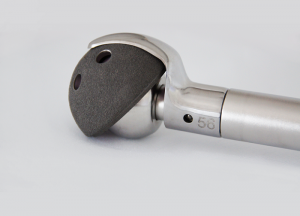 The company called on GE Additive’s Concept Laser Mlab Cusing 100R, which uses direct metal laser melting (DMLM) technology, to 3D print the blades for its endoCupcut in 17-4 PH stainless steel. This reusable device allows surgeons to quickly loosen and extract cementless hip cups without damaging the surrounding bone, as its blades allow for more precise cutting along the edge of the acetabular cup. Additionally, it can be combined with up to 15 different 3D printed stainless steel blades in sizes ranging from 44 mm to 72 mm, and makes it possible to implant the same size cup that was originally there.
The company called on GE Additive’s Concept Laser Mlab Cusing 100R, which uses direct metal laser melting (DMLM) technology, to 3D print the blades for its endoCupcut in 17-4 PH stainless steel. This reusable device allows surgeons to quickly loosen and extract cementless hip cups without damaging the surrounding bone, as its blades allow for more precise cutting along the edge of the acetabular cup. Additionally, it can be combined with up to 15 different 3D printed stainless steel blades in sizes ranging from 44 mm to 72 mm, and makes it possible to implant the same size cup that was originally there.
The 3D printed blades for the endoCupcut, which had only minimal changes from the original model, can be available in just three weeks, including post-processing. The device now has a rejection rate of less than 3%, can achieve consistent outcomes, and the 3D printed blades show excellent corrosion resistance. Rather than cracking after 600 N, the blades show a plastic deformation after applying 1,8 kN, and their hardness level has improved to 42+-2 HRC, compared to 32 HRC.
“Endocon’s ability to solve multiple challenges using additive is impressive example of how it can have a positive impact for smaller companies targeting the orthopedic industry,” said Stephan Zeidler, Business Development Manager Medical for GE Additive. “What started with the need for a reduced time-to-market in terms of product development and flexible production of various shapes and sizes has resulted in a smart, innovative medical product that enhances patient outcomes.
“Moving the entire production process from casting to additive manufacturing was a logical step and that shift continues to provide inspiration for future projects.”
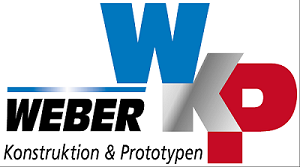 Metal 3D printing specialist and service bureau Weber-KP manages the entire process, including data preparation, build platform orientation, 3D printing, surface finishing, hardening, and bead blasting, for Endocon. The company has even improved the manufacturing process of the blades in order to, as GE Additive put it, “maximize the best possible outcome” and can fit between two and six blades on the Mlab Cusing 100R’s build platform, depending on orientation and size.
Metal 3D printing specialist and service bureau Weber-KP manages the entire process, including data preparation, build platform orientation, 3D printing, surface finishing, hardening, and bead blasting, for Endocon. The company has even improved the manufacturing process of the blades in order to, as GE Additive put it, “maximize the best possible outcome” and can fit between two and six blades on the Mlab Cusing 100R’s build platform, depending on orientation and size.
Using DMLM technology to 3D print the blades has improved their mechanical properties, and also ensures high density and accuracy. By using stronger, harder, and more reliable blades on the endoCupcut, the device performs better for the surgeon in the operating room, and also makes things safer for the patient by lowering the risk of breakage and splinters being embedded in their tissue. Using this device, surgery time has been decreased from 30 minutes to just three, and its precise cutting method preserves the highest possible amount of bone substance, which “supports an accelerated healing process for the patient.”
Other benefits of fabricating the endoCupcut blades with DMLM 3D printing include:
- High-fitting accuracy of blades through modular system of ball-shaped heads
- Perfect fitting of ball-shaped heads in a 38-60 mm width
- Reusable for multiple operations
- Wear-resistant and easy to sterilize
Lowering surgical risk saves hospitals money and time, and the world is definitely taking notice of Endocon’s innovative work. The endoCupcut is already being used by several medical professionals around Germany, and the company itself is a finalist in the TCT Awards next week.
Discuss this story and other 3D printing topics at 3DPrintBoard.com or share your thoughts below.
[Images provided by GE Additive]

